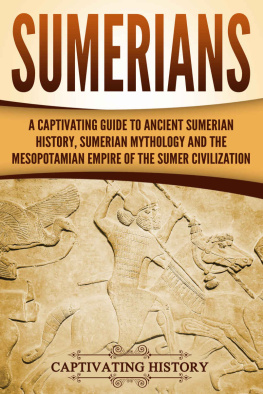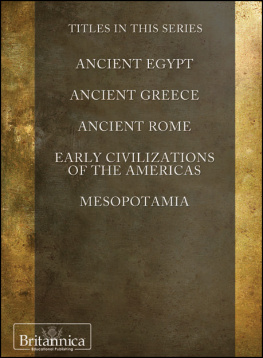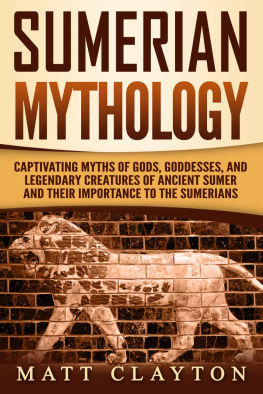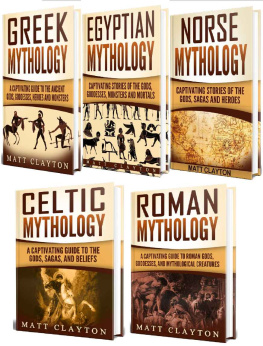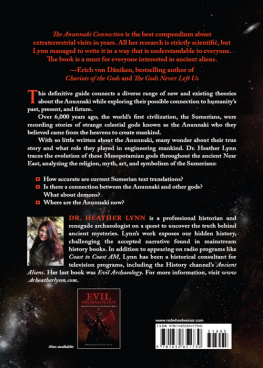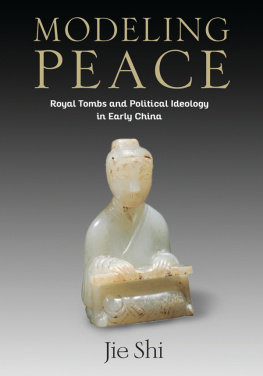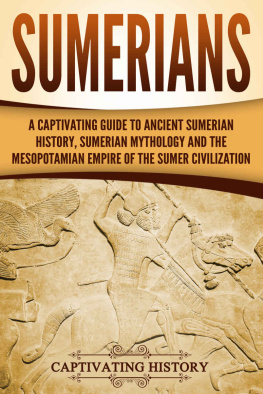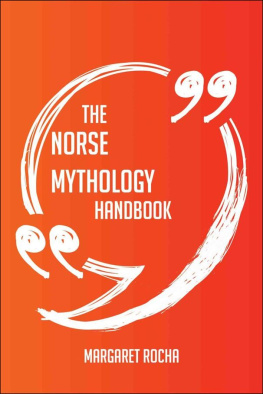Peeter Espak - The God Enki In Sumerian Royal Ideology And Mythology
Here you can read online Peeter Espak - The God Enki In Sumerian Royal Ideology And Mythology full text of the book (entire story) in english for free. Download pdf and epub, get meaning, cover and reviews about this ebook. year: 2014, genre: Religion. Description of the work, (preface) as well as reviews are available. Best literature library LitArk.com created for fans of good reading and offers a wide selection of genres:
Romance novel
Science fiction
Adventure
Detective
Science
History
Home and family
Prose
Art
Politics
Computer
Non-fiction
Religion
Business
Children
Humor
Choose a favorite category and find really read worthwhile books. Enjoy immersion in the world of imagination, feel the emotions of the characters or learn something new for yourself, make an fascinating discovery.

- Book:The God Enki In Sumerian Royal Ideology And Mythology
- Author:
- Genre:
- Year:2014
- Rating:3 / 5
- Favourites:Add to favourites
- Your mark:
- 60
- 1
- 2
- 3
- 4
- 5
The God Enki In Sumerian Royal Ideology And Mythology: summary, description and annotation
We offer to read an annotation, description, summary or preface (depends on what the author of the book "The God Enki In Sumerian Royal Ideology And Mythology" wrote himself). If you haven't found the necessary information about the book — write in the comments, we will try to find it.
Peeter Espak: author's other books
Who wrote The God Enki In Sumerian Royal Ideology And Mythology? Find out the surname, the name of the author of the book and a list of all author's works by series.
The God Enki In Sumerian Royal Ideology And Mythology — read online for free the complete book (whole text) full work
Below is the text of the book, divided by pages. System saving the place of the last page read, allows you to conveniently read the book "The God Enki In Sumerian Royal Ideology And Mythology" online for free, without having to search again every time where you left off. Put a bookmark, and you can go to the page where you finished reading at any time.
Font size:
Interval:
Bookmark:


Usuteaduskonna noukogu otsusega 18. oktoobril 2010 on Peeter Espaki vaitekiri "The God Enki in Sumerian Royal Ideology and Mythology" ("Jumal Enki Sumeri kuninglikus ideoloogias ja miitoloogias") lubatud kaitsmisele TU usuteaduskonna noukogus filosoofiadoktori (usuteadus) kraadi saamiseks.
Juhendajad: prof Thomas Richard Kammerer, PhD (Tartu Ulikool) prof Tarmo Kulmar, dr theol (Tartu Ulikool)
Eelretsensendid: prof Vladimir V. Emelyanov, PhD (Peterburi Ulikool) prof Annette Zgoll, PhD (Gottingeni Ulikool)
Oponent: prof Vladimir V. Emelyanov, PhD (Peterburi Ulikool)
Kaitsmine toimub 14. detsembril 2010 kell 16.15 TU noukogu saalis
ISSN 1406-2410
ISBN 978-9949-19-522-0 (triikis) ISBN 978-9949-19-523-7 (PDF)
Autorioigus: Peeter Espak, 2010
Tartu Ulikooli Kirjastus www.tyk.ee Tellimus nr. 692
CONTENTS
ACKNOWLEDGEMENTS 8
INTRODUCTION 9
1. EARLY DYNASTIC PERIOD 15
1.1. Ur-Nanse 15
1.2. Eanatum 18
1.3. Enanatum I 22
1.4. Enmetena 24
1.5. Uru'inimgina 26
1.6. Ur-Lumma and Gisa-kidu of Umma 29
1.7. EliliofUr 30
1.8. Lugalzagesi of Uruk 30
1.9. Conclusions 33
2. THE DYNASTY OF AKKADE 34
2.1. Naram-Su'en 34
2.2. Lugal-gis of Adab 39
2.3. Conclusions 40
3. THE SECOND DYNASTY OF LAGAS 41
3.1. Puzur-Mama 41
3.2. Ur-Bau 41
3.3. Gudea 42
3.4. Conclusions 51
4. UR III PERIOD 52
4.1. Ur-Namma 52
4.2. Puzur-Insusinak of Elam 58
4.3. Sulgi 58
4.4. Amar-Su'en 72
4.5. Su-Su'en 77
4.6. Ibbi-Su'en 78
4.7. Puzur-EstarofMari 81
4.8. Iddin-Su'en of Simurrum 85
4.9. Conclusions 85
5. THE DYNASTY OF ISIN 87
5.1.Su-ilisu 87
5.2. Iddin-Dagan 88
5.3. Isme-Dagan 89
5.3.1. The City Laments 99
5.4. Lipit-Estar 105
5.5. Ur-Ninurta 107
5.6. Bur-Su'en 110
5.7. Enlil-bani Ill
5.8. Religious Ideology of Isin Texts Reflected in Sumerian Myths 112
5.8.1. Enki and the World Order 113
5.8.2. Enki's Journey to Nippur 116
5.8.3. Inanna and Enki 117
5.9. Conclusions 119
6. THE DYNASTY OF LARSA 120
6.1. Gungunum 120
6.2. Nur-Adad 121
6.3. Su'en-iddinam 122
6.4. Su'en-iqisam 124
6.5. Kudur-mabuk and Warad-Su'en 125
6.6. Rim-Su'en 127
6.7. Su'en-kasidofUruk 138
6.8. Iahdun-Lim of Mari 138
6.9. Conclusions 139
7. THE FIRST DYNASTY OF BABYLON 141
7.1. Hammurapi 141
7.2. Samsu-iluna 150
7.3. Abi-esuh 155
7.4. Ammi-ditana 156
7.5 Ammi-saduqa 156
7.6. Ipiq-Estar and Takil-ilisu of Malgium 156
7.7. Conclusions 159
8. ENKI (EA) IN THE MYTHOLOGY OF CREATION 160
8.1. Enki and Ea as Cosmic Entities 160
8.2. Enki (Ea) and the Emergence of the Present World 165
8.3. The Nature of Sumerian Abzu 174
8.4. Enki as the Creator of Man 184
8.4.1. Enki and Ninmah 186
8.4.2. Atrahasis 189
8.4.3. Enuma elis 191
8.4.4. Other Accounts 193
8.4.5. Parallels from Genesis 195
8.4.6. The Creation of the First Woman 197
8.5. The Copulation Motive 198
8.5.1. Enki and Ninmah 199
8.5.2. Atrahasis 200
8.5.3. Reflections in Genesis 202
8.5.4. Enki and the Mother-Goddess 204
8.5.5. Enki and Ninhursag 207
8.6. Enki as the Originator of Human Mortality 213
8.7. Conclusions 214
9. ENKI AND THE ARCHAIC SUMERIAN RELIGION: THE QUESTION OF RIVALRY BETWEEN THE THEOLOGIES OF ENKI
AND ENLIL 215
GENERAL CONCLUSIONS 236
ABBREVIATIONS 239
Bibliographical Abbreviations 239
Textual Abbreviations 245
Royal Inscriptions and Hymns 245
Literary Compositions 252
BIBLIOGRAPHY 254
SUMMARY IN ESTONIAN 272
ELULOOKIRJELDUS 280
CURRICULUM VITAE 282
ACKNOWLEDGEMENTS
I wish to thank my supervisor Professor Thomas Richard Kammerer for providing me with several useful comments and general advice in the course of the completion of the dissertation. The topic of the study "Enki (Ea) in Ancient Near Eastern mythology and religion" was proposed by Prof. Kammerer in 2004. Such a choice of topic was merited by the fact that although the mythology of Enki/Ea forms the central point in all the periods of Mesopotamian and Ancient Near Eastern history of religions, few detailed and extensive academic treatise have been written on the subject during the last decades.
I also wish to thank my co-supervisor Professor Tarmo Kulmar for the support and advice, which he kindly provided in numerous areas relating to general and comparative studies of history of religions. This advice was crucial in helping the author to grasp the underlying context, and thus approach the subject not merely as a sub-chapter of Assyriological studies, but rather of religious studies in general. Extensive discussions with Prof. Kulmar about the water-cults in different religions, the nature of archaic tribal cultic and political unions, the structure of Indo-European mythology and the mechanisms of archaic fertility-cults were all useful in developing the current text.
I also wish to thank other teachers, colleagues and advisors who have always provided me with useful comments and help during the composition of the dissertation: Vladimir Sazonov, Amar Annus, Urmas Nommik, Liina Ootsing-Liiecke, etc. Since the biggest obstacle in completing the study has been the lack of a large scientific library of Ancient Near Eastern Studies in Estonia, I especially wish to thank all the co-students and teachers who have helped me to get access to literature from foreign libraries, which has made the composition of the current study possible. I am grateful to Elmer Kohandi as well as to Adrian Bachmann and Parviz Partovi for reviewing the English text of the dissertation.
INTRODUCTION
Hannes D. Gaiter begins his dissertation about the Sumero-Akkadian Ea/Enki from the year 1983 Der Gott Ea/Enki in der akkadischen Uberlieferung. Eine Bestandsaufnahme des vorhandenen Materials with the observation that understanding religion is one of the most important means of comprehending the entire cultural complexity of Mesopotamia:
Untersuchungen der Religion bilden nach wie vor einen der wichtigsten Wege zum Verstandnis einer Kultur. Und nirgends spiegeln sich Mentalitat und Vor-stellungskraft der Menschen deutlicher wider als in den Gestalten ihrer Gotter. Dies gilt in besonderem MaB fur den Bereich der mesopotamischen Kulturen. 1
His description can be complemented by Paul Tillich's famous but often neglected statement "Religion is the essence of culture, and culture is the form of religion." 2 Although this sentence can be interpreted in a number of ways, and there is no universally accepted definition for the terms "religion" and "culture," Tillich makes it clear that we cannot speak of religion as distinct from culture and there is no culture disjointed from religion. Bronislaw Malinowski interprets these questions in anthropological terms and tries to see a clear distinction between the notions of religion/magic and science, thus dividing culture into two separate parts - sacred and profane:
There are no peoples however primitive without religion and magic. Nor are there, it must be added at once, any savage races lacking either in the scientific attitude or in science, though this lack has been frequently attributed to them. In every primitive community, studied by trustworthy and competent observers, there have been found two clearly distinguishable domains, the Sacred and the Profane; in other words, the domain of Magic and Religion and that of Science. 3
Font size:
Interval:
Bookmark:
Similar books «The God Enki In Sumerian Royal Ideology And Mythology»
Look at similar books to The God Enki In Sumerian Royal Ideology And Mythology. We have selected literature similar in name and meaning in the hope of providing readers with more options to find new, interesting, not yet read works.
Discussion, reviews of the book The God Enki In Sumerian Royal Ideology And Mythology and just readers' own opinions. Leave your comments, write what you think about the work, its meaning or the main characters. Specify what exactly you liked and what you didn't like, and why you think so.

